Tuḥfat al-ʻIrāqayn : manuscript, 1604

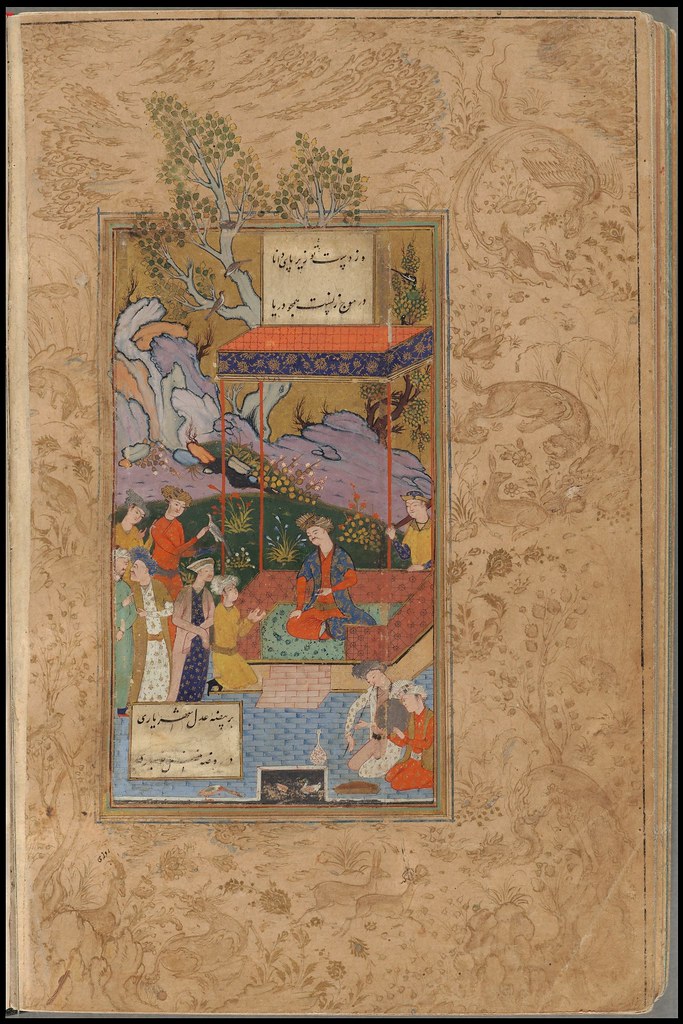
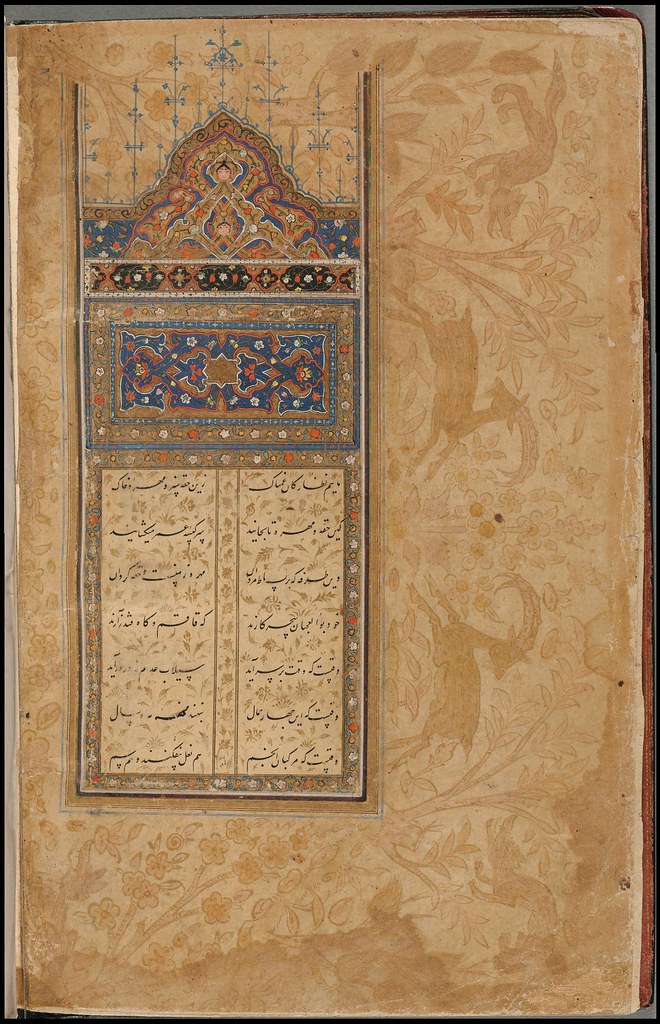
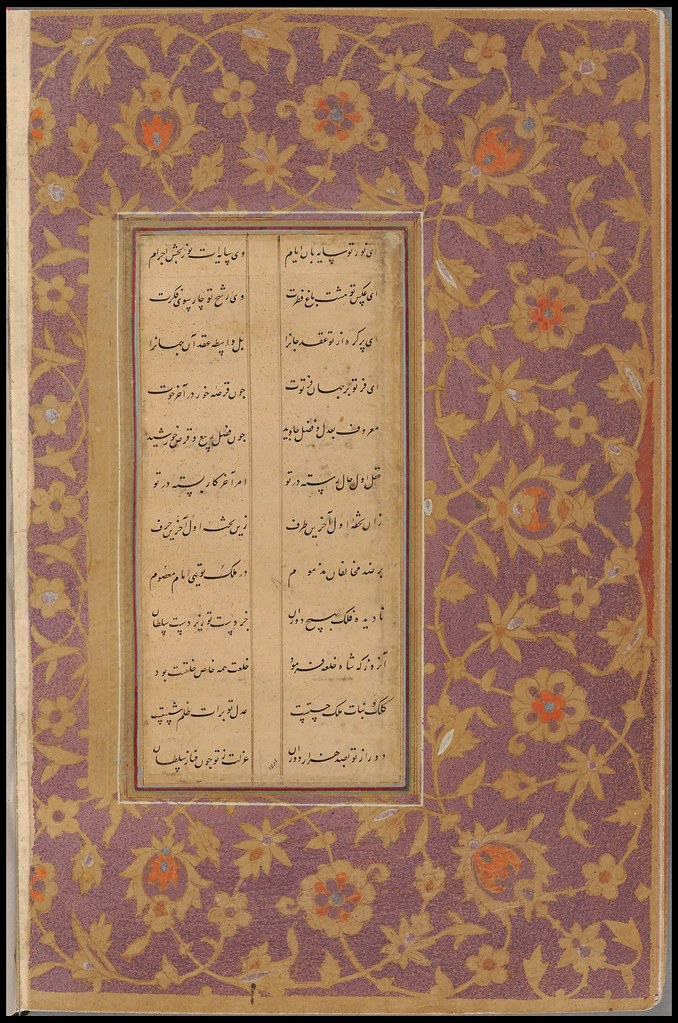
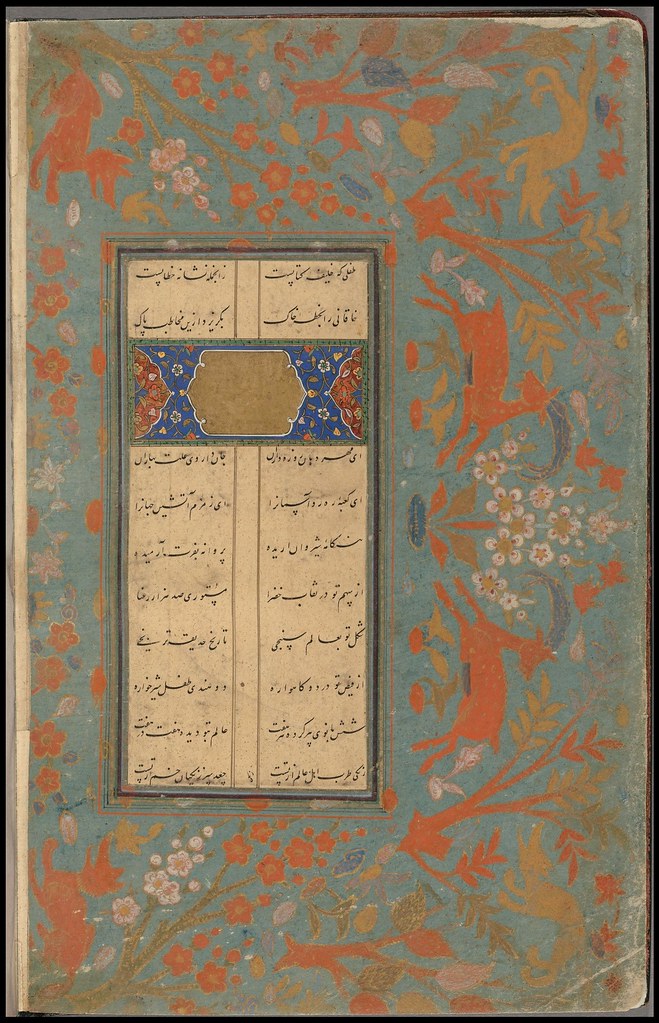

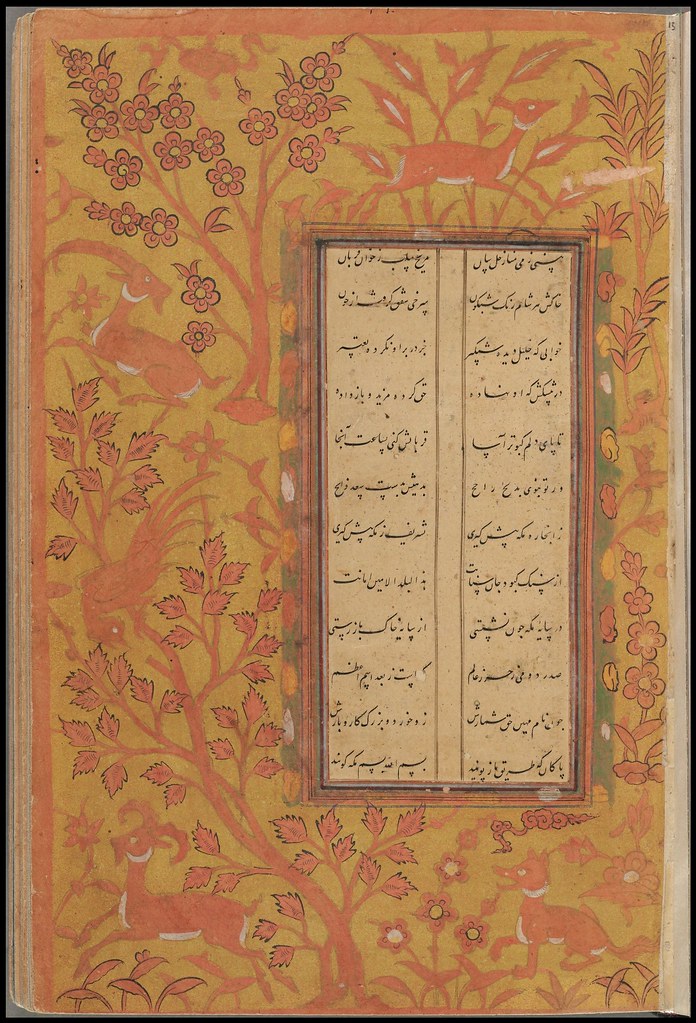
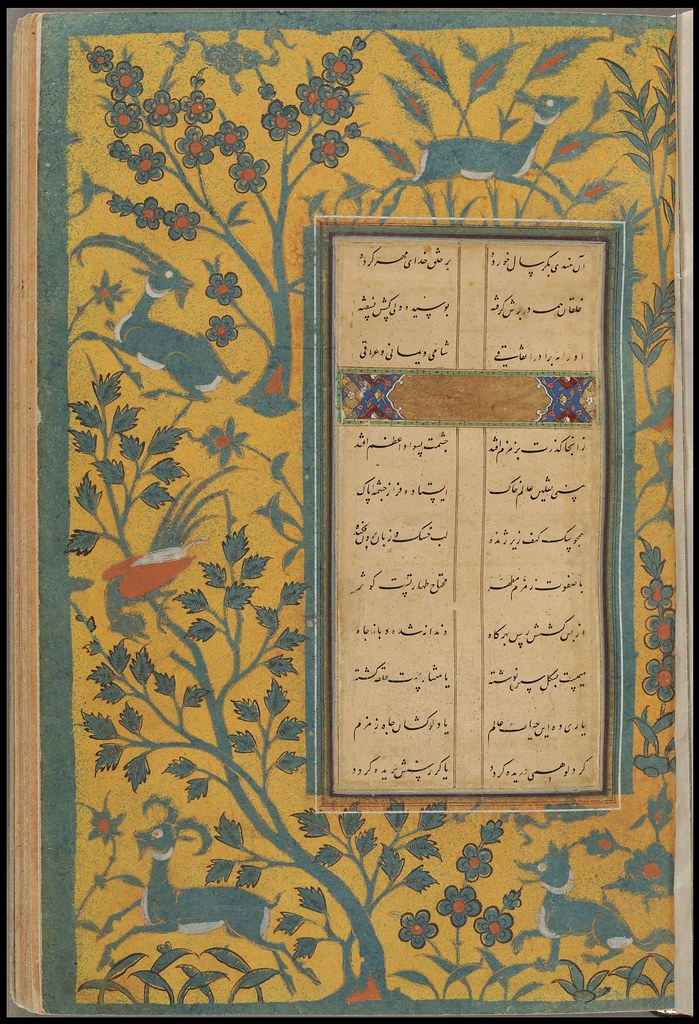
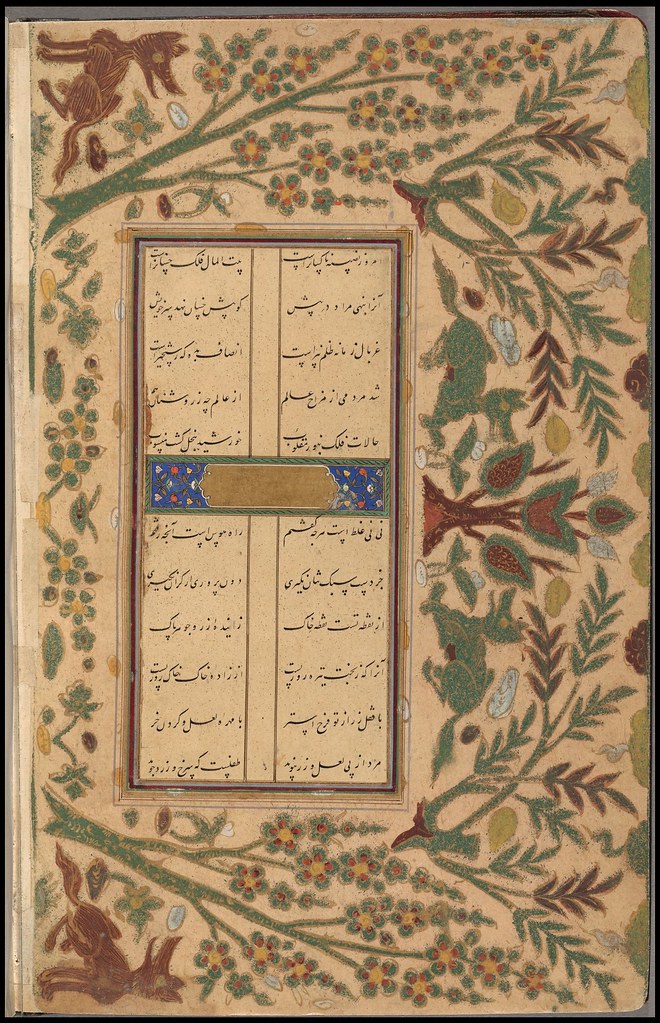
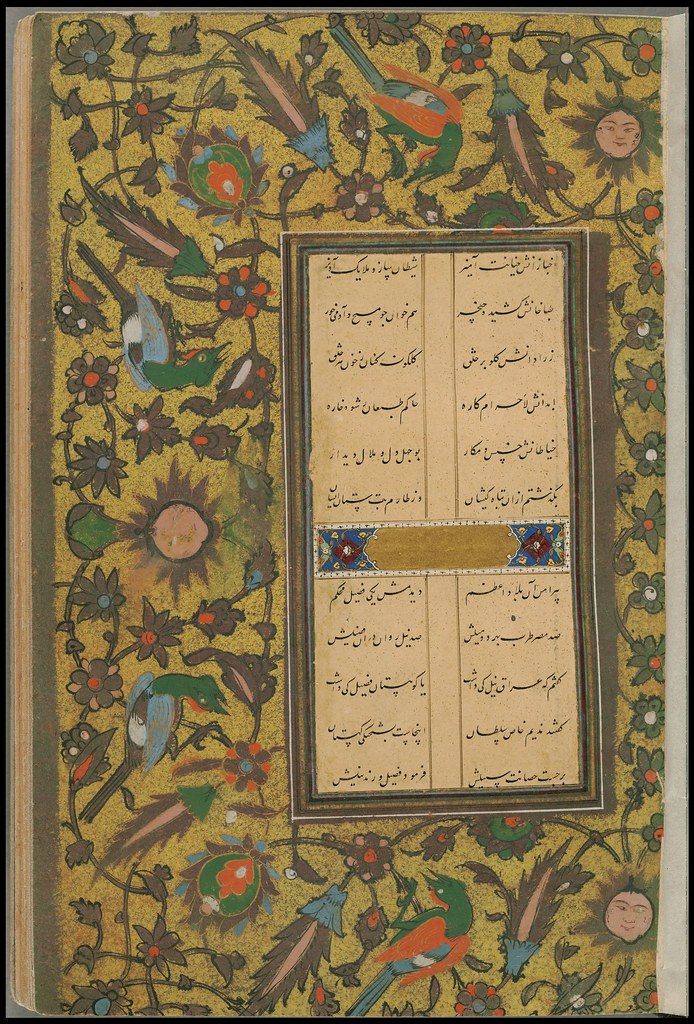
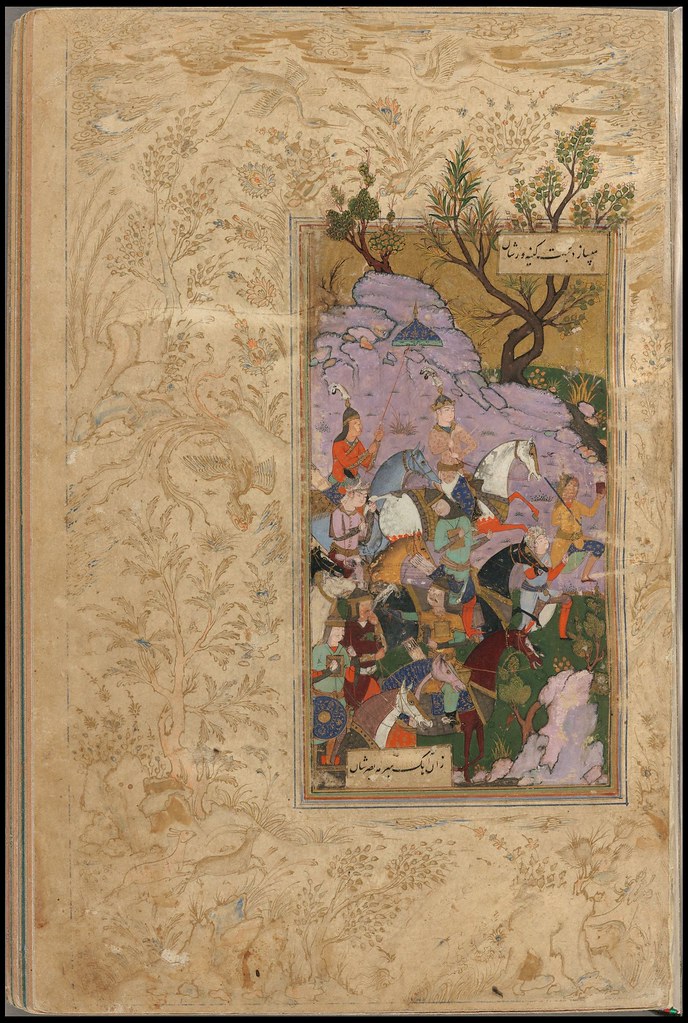
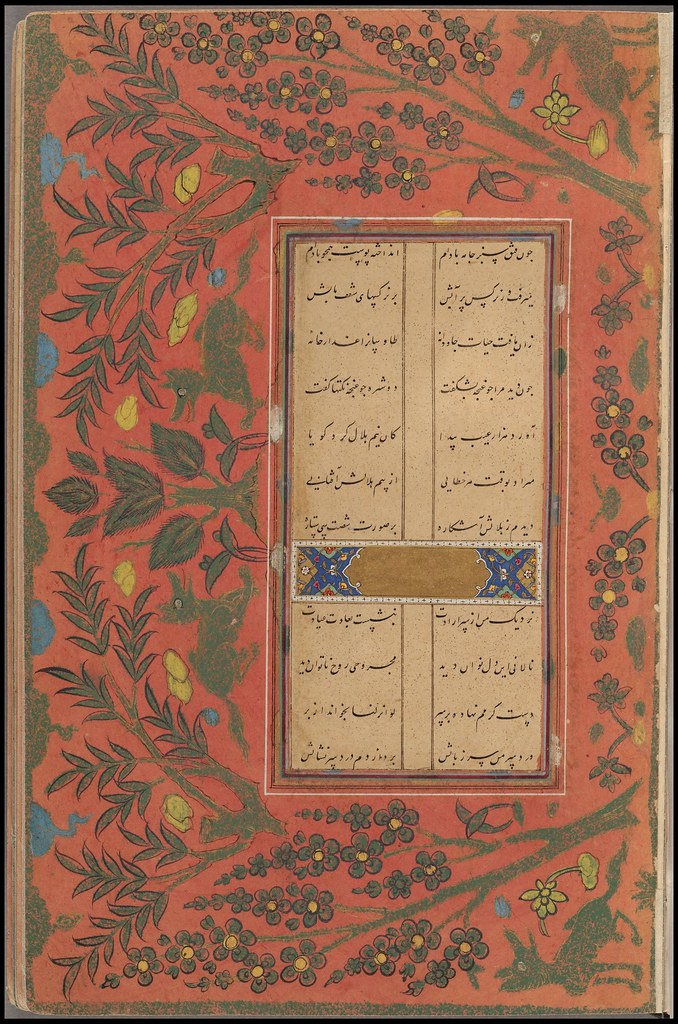
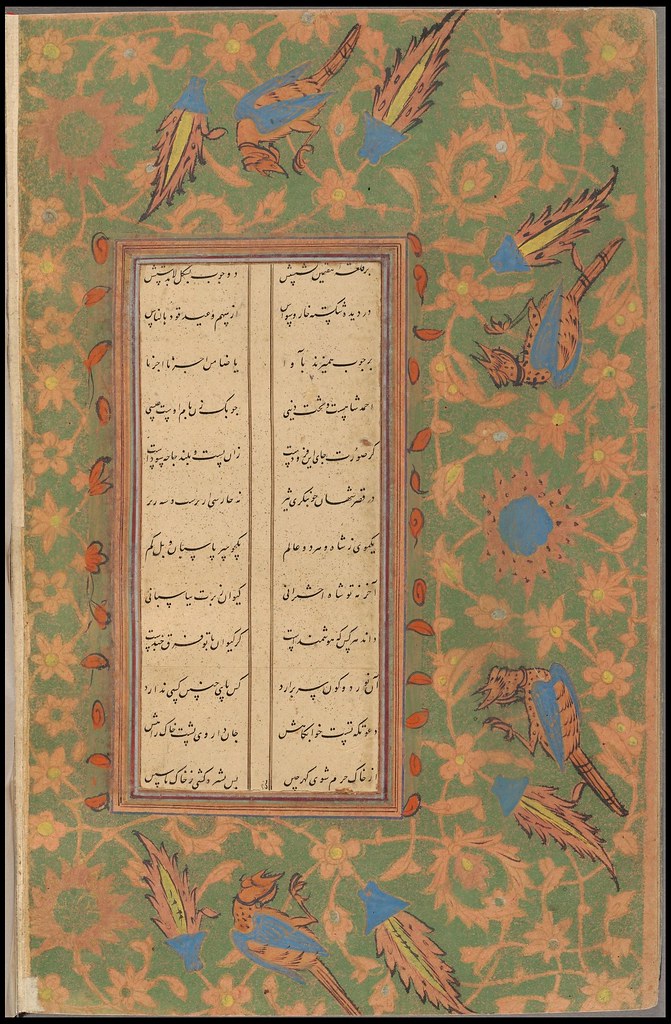

{the images were spliced together from screencaps and it's worth clicking through to look at the higher resolution versions; the notes below are essentially paraphrased from the bibliographic record}
This manuscript of Persian poems was written in a small professional nastaliq* script in black ink in two columns laid into the pages. The text is framed within multiple coloured lines (red, green, gold, black and blue).
The page-borders are patterns of birds and animals in colours (pink, orange, blue, etc...) outlined in gold. There are numerous aniconic* headpieces in colours and gold, and three miniatures from the Isfahan school. All of the pages are decorated.
The manuscript was produced in 1604 by Shāh Qāsim and is a copy of the original collection of poetry by Khāqānī, Afz̤al al-Dīn Shirvānī from the end of the 12th century. The poems are classified bibliographically as travel anecdotes.
Tuḥfat al-ʻIrāqayn (MS Typ 536) was digitised by Houghton Library at Harvard University.
I came across the work while looking through the manuscripts in Harvard's Islamic Heritage Project.
Previously: arabic; illuminated.
Is 'laid in' the same as 'tipped in'? These look to me as if the manuscripts are matted. Just curious.
ReplyDeleteThat was not my construction: it's assimilated from the bibliography. I don't believe the composition of the manuscript medium itself was mentioned.
ReplyDeleteSuch beautiful floral motifs! I would never have the patience to create such intricate line work! Thank you for sharing these!
ReplyDeleteThose are fantastic. What beautiful design they had and so detailed it's really impressive. It must have taken someone weeks to finish a page.
ReplyDeleteStunning decorative work. The background pattern work seems to have been copied countless times in European textile and wallpaper work.
ReplyDelete